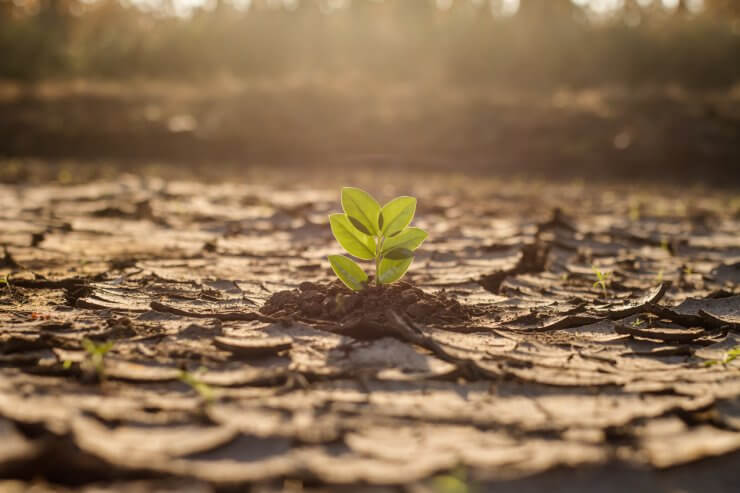
We all know that vegetables need water to grow, but what happens when watering your garden gets complicated. You might live in a dry climate where droughts are common. Or maybe you use well water and need to be careful about using a sprinkler or irrigation system on a regular basis. Whatever your reason, choosing drought-resistant vegetables is a great strategy when planting a water-conscious garden.
Discover 10 top tips for growing, harvesting, and enjoying fruits, vegetables, herbs and more from your home garden—when you access the FREEBIE How to Grow a Vegetable Garden, right now!
Does soil-type factor into drought conditions?
A soil’s ability to retain moisture depends on what the soil is made of. Some basic soil components are sand, clay, loam, and silt. Your soil may contain a combination of these types or be more concentrated in one type. The particle size of clay, sand, loam, and silt dictates how well soil retains moisture. For instance, clay has a smaller particle size which gives it a larger surface area to retain water. On the other hand, sand is a larger particle with less surface area to hold onto moisture. Silt and loam fall somewhere in between with mid-sized particles. Sandy soil is more prone to drought if not amended with compost and other organic matter.
What about climate?
In terms of climate, if you live in an area that doesn’t receive a lot of rainfall and experiences a lot of evaporation due to higher temperatures, you may live in a drought-prone region. In the U.S., many of the states west of Texas experience at least 30% of the year in some level of drought. There are also areas in the southeast, north of Florida, and south of Virginia that experience some seasonal drought. If you find yourself living in an area that experiences periods of drought or have soil conditions that are prone to drought, consider planting these ten drought-resistant vegetables.
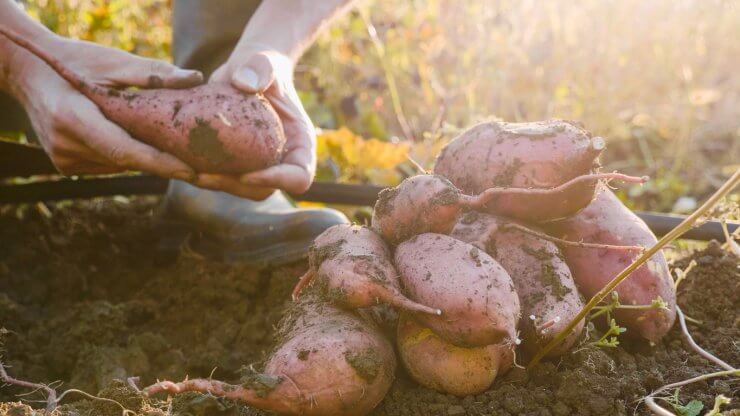
1. Sweet potato
This nutrient-dense superfood is noteworthy for its versatility and drought tolerance. Certain varieties have been bred specifically to be drought-resistant vegetables in the Sub Saharan climate of Africa.
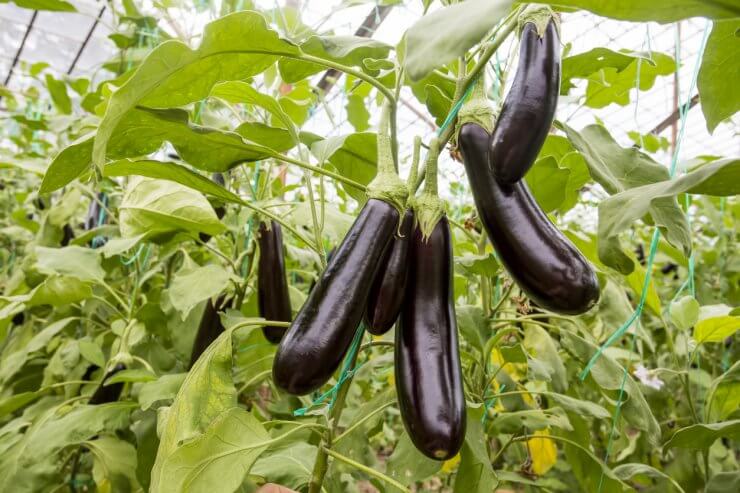
2. Eggplant
The trick with growing drought-resistant vegetables like eggplant is to choose a variety like the Ping Tung eggplant, which yields longer and skinnier sized vegetables that require less water to yield. Other varieties that are drought tolerant are the Listada de Gandia and the Rosa Bianca.

3. Peppers
Peppers, especially hot peppers, need a long warm growing season. Hot peppers are also drought tolerant and can survive in dry conditions. It’s worth noting that a consistent lack of moisture will result in a smaller yield, but using conservative watering methods like drip irrigation can benefit these plants.
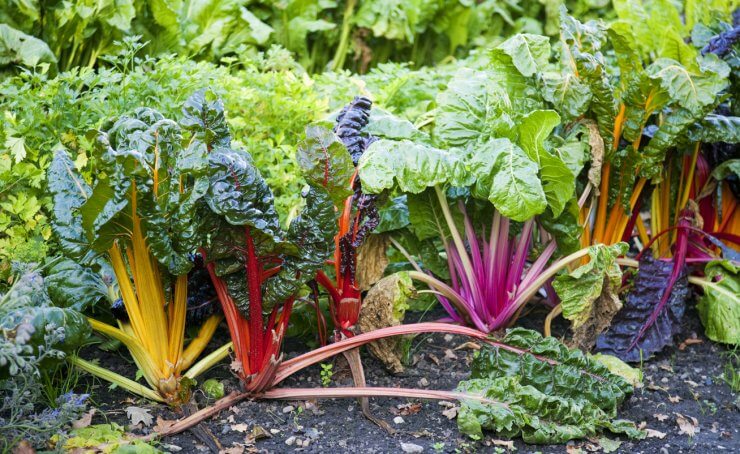
4. Swiss chard
Not only drought-tolerant, Swiss chard is also heat-tolerant. If the chard plant becomes too dry, however, it can produce a harsher flavor so it may be one of the drought-resistant vegetables to plant in areas with shorter periods of drought.
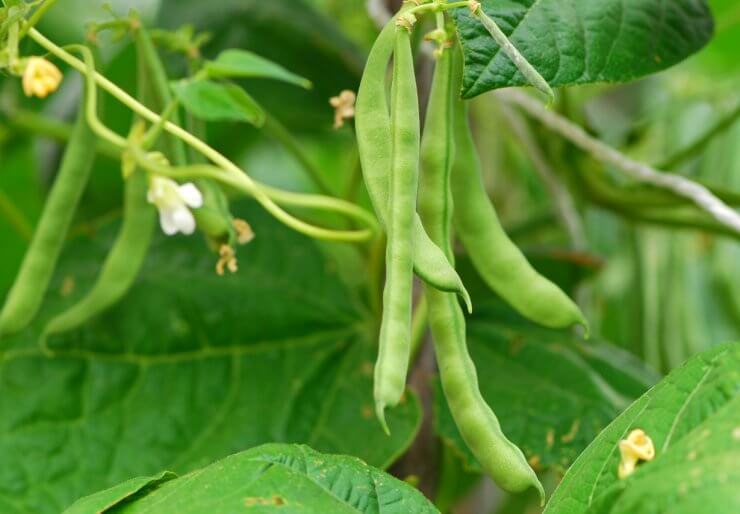
5. Pole beans
Beans in general tend to be more tolerant of drought. Pole beans make great drought-resistant vegetables, especially varieties like the Rattlesnake Pole Bean which does well in sandy soil.
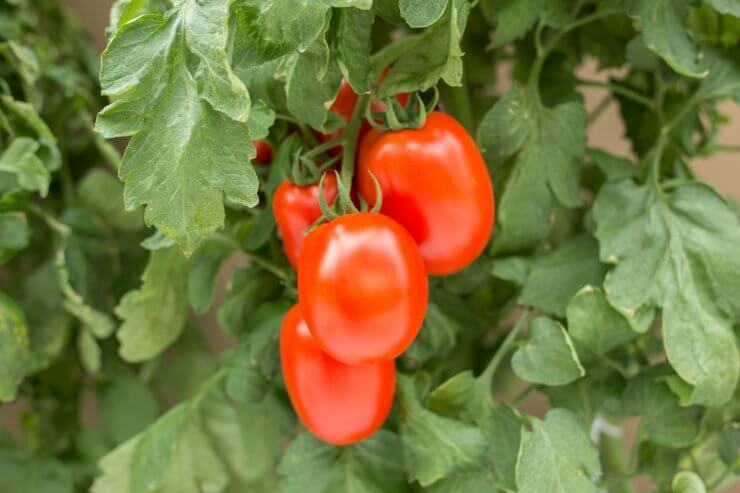
6. Tomatoes
I bet you didn’t think you’d see tomatoes on a list of drought-resistant vegetables. Believe it or not, there are some varieties of tomatoes that can tolerate periods of drought. Smaller fruited tomatoes generally do better in drier conditions. Varieties like Roma and Early Girl are especially drought-tolerant.

7. Chickpeas (garbanzo beans)
Chickpeas are regularly grown in semi-arid regions across the globe so it’s no surprise to find them on our list of drought-resistant vegetables. Scientists are investigating ways of making them even more drought-tolerant which could prove beneficial to areas of the world experiencing extreme drought.
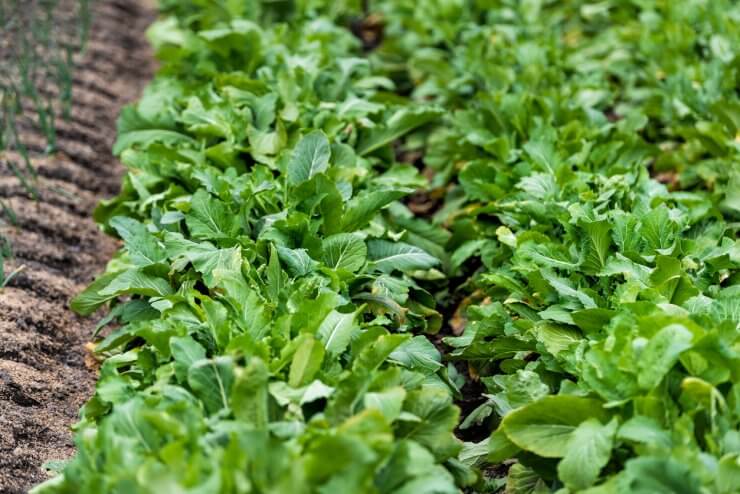
8. Mustard greens
The trick with growing drought-tolerant mustard greens is to avoid frequent short bursts of watering that train roots to become shallow. With less frequent and more thorough watering, roots will grow deeper and when established be able to sustain dry periods.
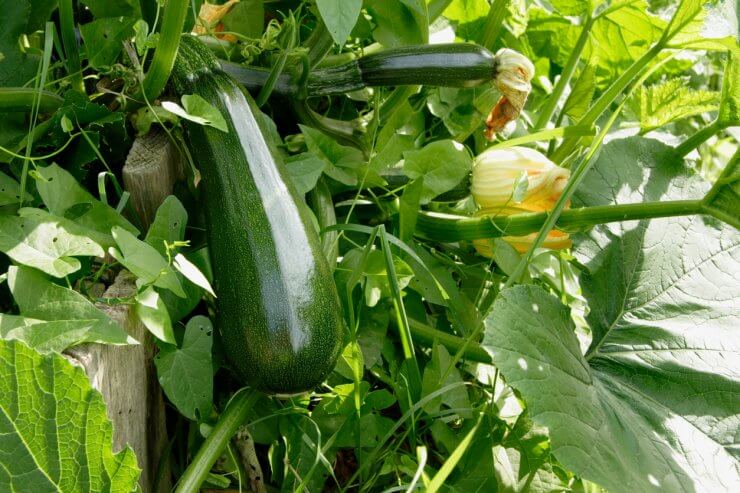
9. Zucchini
The Dark Star variety of zucchini was bred specifically for drought resistance and yield. Its roots grow deep into the ground and seek out the water table to offset any deficiency from a lack of watering or precipitation.
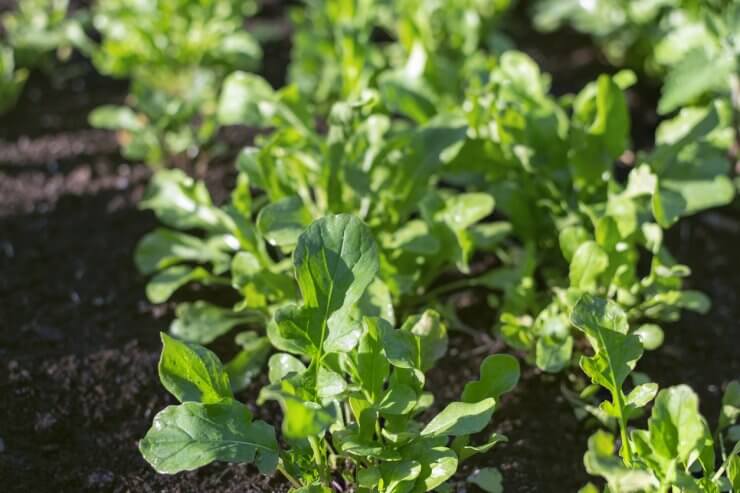
10. Arugula
Arugula is one of the great drought-resistant vegetables since it’s pretty easy to grow and can tolerate periods of dryness. With extended periods of drought, arugula leaves will be a bit smaller and take on an even more peppery taste.
It’s important to note that even drought-resistant vegetables need a good watering when establishing roots. So don’t skimp on your seeds and seedlings! There are many reasons to plant drought-resistant vegetables even if you live in a temperate climate with good soil and regular rainfall. Planting drought-resistant vegetables helps you use less water in your garden and conserve your overall water usage. Something we should all be striving toward as stewards of this planet.
Do you have a water-conscious gardening plan? What drought-resistant vegetables have you planted in the past and which ones will you try in the future? Let me know in the comments!
Discover 10 top tips for growing, harvesting, and enjoying fruits, vegetables, herbs and more from your home garden—when you access the FREEBIE How to Grow a Vegetable Garden, right now!


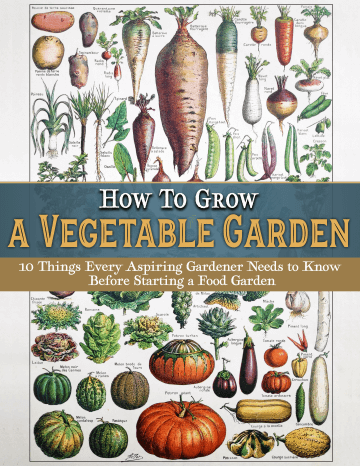


What is the best way to deal with slugs they ate all my b
Crop last year
I notice that you don’t mention mulching in the article about drought-tolerant vegetables. I mulched over sandy soil in the worst drought that had taken place in northern Minnesota in 100 years, and I got bumper crops of everything.
Cool I also remember mulching with spoiled haylage worked great for the melons pickles n squash, also tomatoes ????. Remember getting blight n dark rot spots on bottom of tomatoes some years in Minnesota.
Hi. I live in Farmington, NM. It’s very dry and hot up here as well…. BUT the bugs and squirles!! OMG.. they went to town eating my squash and tomatoes. I had aphids, stink bugs, squash bugs, ants and beetles…. hubby says plant marigolds. I’ve never done that before…. any advice, tips or instructions would be so appreciated! Happy gardening everyone! And thank you.
Hubby is right, marigolds can act as a great trap crop to attract bugs in that direction instead of onto your ripe plants. If you’re having such an infestation, I suggest a neem oil spray to keep them away from your plants. You’ll need to re-spray after each rain but it’s very effective!
Our problem here in Las Vegas, Nevada, is heat! From July through September, we have temperatures from 110° to 115°. I plant my veggies in self-watering pots, and they do well until the high temps come in. Any suggestions for dealing with veggies that fry on the vine?
Hi Dixie,
We have the same problem here in Las Cruces, New Mexico. Our container-gardening experts at NMSU suggest putting your pots inside of a larger pot, leaving a couple of inches of space between the pot walls to allow a buffer for the heat. Also, use light-colored wooden, plastic or resin pots instead of dark concrete or clay pots. You could put some bark mulch or peat moss between the pots to absorb some of the heat also. If able, moving the pots into the shade at the hottest time of day will help also.
How about setting up a shade of gauze cloth over bamboo or stakes to shield the plants from the sun? It could be movable.
Create a light pergola of bamboo or stakes covered with gauze cloth to shelter the plants in the hottest part of the day. It could be movable.
I am trying container gardening this year with tomatoes, zucchini and cucumbers and cilantro.
Hi…I did 8 pots of container gardening last year from seeds started indoors and it worked fabulously. Tomatoes , Green Onions, Herbs , Green Beans were amazing & abundant. This year will also be Beets, Zucchini, Cucumbers , for the heck of it a bit of Corn. Lol!
Good luck & enjoy. I hooked up a sprinkling system by myself to them for watering. It was easy.
Have fun & make notes for future family.
Ha! Getting brave with the corn there, I’d love to know how it does! I have trouble growing it, but this year I made more space, fingers crossed! All of my sprouts just came up, I thought they were gonners after a recent bout of constant rain but they made it!
Good luck! I bet those will all grow great!